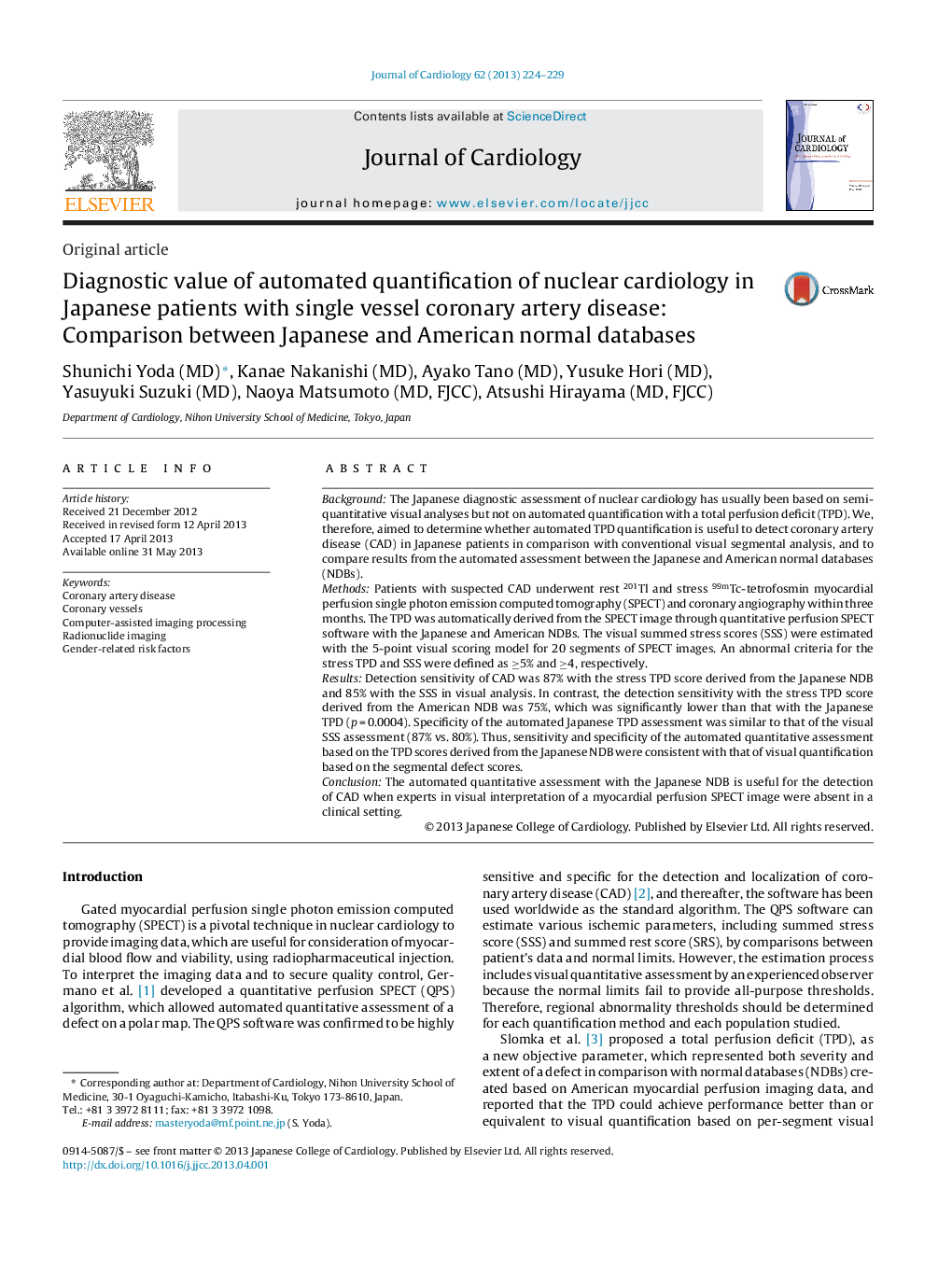| کد مقاله | کد نشریه | سال انتشار | مقاله انگلیسی | نسخه تمام متن |
|---|---|---|---|---|
| 5984195 | 1178537 | 2013 | 6 صفحه PDF | دانلود رایگان |
BackgroundThe Japanese diagnostic assessment of nuclear cardiology has usually been based on semi-quantitative visual analyses but not on automated quantification with a total perfusion deficit (TPD). We, therefore, aimed to determine whether automated TPD quantification is useful to detect coronary artery disease (CAD) in Japanese patients in comparison with conventional visual segmental analysis, and to compare results from the automated assessment between the Japanese and American normal databases (NDBs).MethodsPatients with suspected CAD underwent rest 201Tl and stress 99mTc-tetrofosmin myocardial perfusion single photon emission computed tomography (SPECT) and coronary angiography within three months. The TPD was automatically derived from the SPECT image through quantitative perfusion SPECT software with the Japanese and American NDBs. The visual summed stress scores (SSS) were estimated with the 5-point visual scoring model for 20 segments of SPECT images. An abnormal criteria for the stress TPD and SSS were defined as â¥5% and â¥4, respectively.ResultsDetection sensitivity of CAD was 87% with the stress TPD score derived from the Japanese NDB and 85% with the SSS in visual analysis. In contrast, the detection sensitivity with the stress TPD score derived from the American NDB was 75%, which was significantly lower than that with the Japanese TPD (p = 0.0004). Specificity of the automated Japanese TPD assessment was similar to that of the visual SSS assessment (87% vs. 80%). Thus, sensitivity and specificity of the automated quantitative assessment based on the TPD scores derived from the Japanese NDB were consistent with that of visual quantification based on the segmental defect scores.ConclusionThe automated quantitative assessment with the Japanese NDB is useful for the detection of CAD when experts in visual interpretation of a myocardial perfusion SPECT image were absent in a clinical setting.
Journal: Journal of Cardiology - Volume 62, Issue 4, October 2013, Pages 224-229
